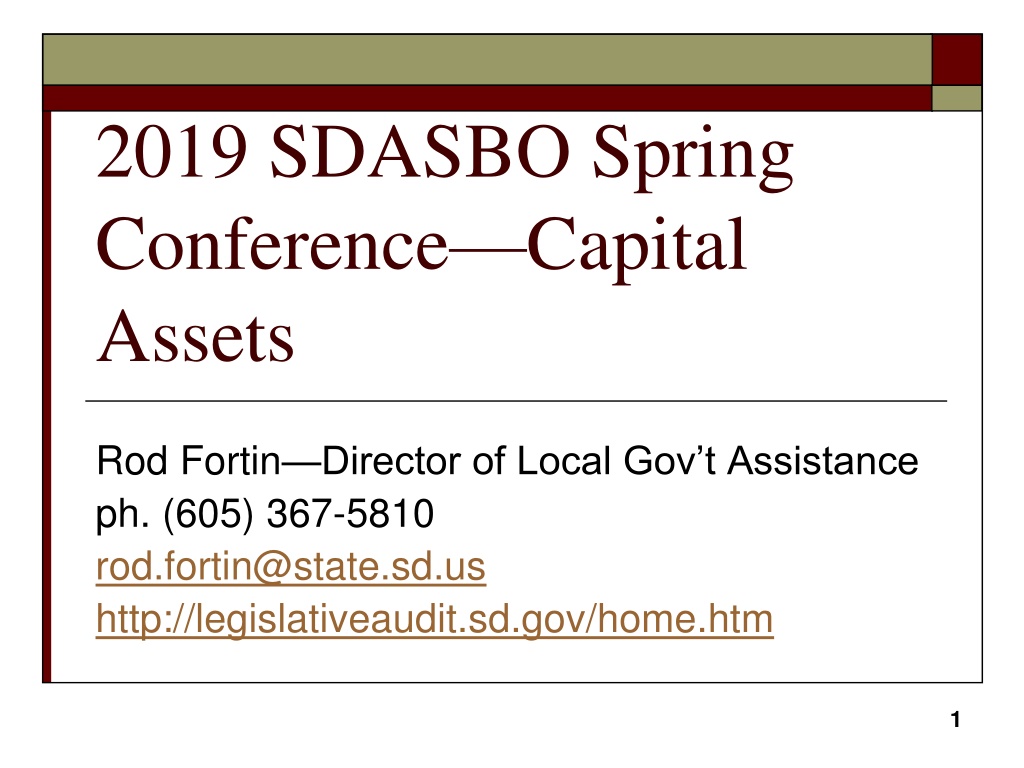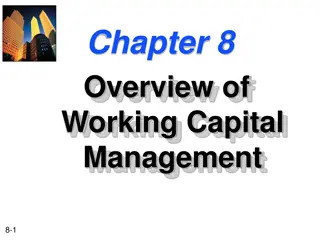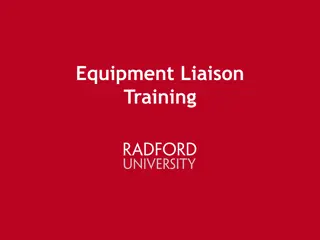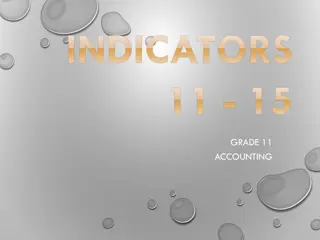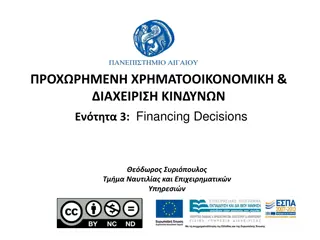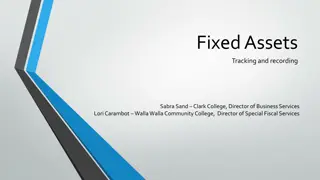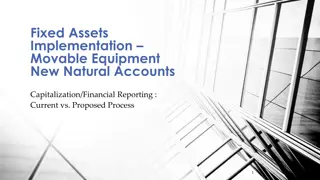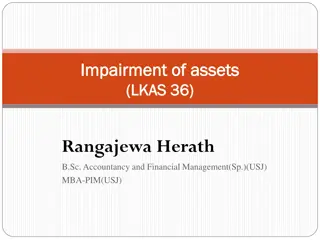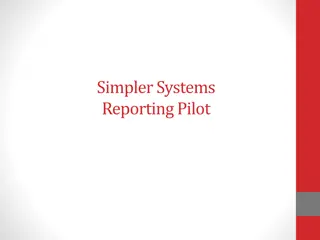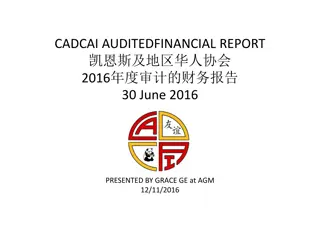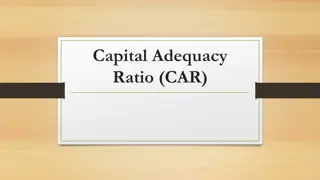Understanding Capital Assets and Financial Reporting
This presentation delves into the world of capital assets, focusing on their categorization, ownership, and reporting in financial statements. Key topics include the distinction between tangible and intangible assets, responsible asset management, and the implications of capital leases on ownership. It emphasizes the importance of accurate record-keeping for financial reporting purposes.
Download Presentation

Please find below an Image/Link to download the presentation.
The content on the website is provided AS IS for your information and personal use only. It may not be sold, licensed, or shared on other websites without obtaining consent from the author. Download presentation by click this link. If you encounter any issues during the download, it is possible that the publisher has removed the file from their server.
E N D
Presentation Transcript
2019 SDASBO Spring Conference Capital Assets Rod Fortin Director of Local Gov t Assistance ph. (605) 367-5810 rod.fortin@state.sd.us http://legislativeaudit.sd.gov/home.htm 1
Intro Presentation will address capitalized and noncapitalized assets and internal controls; however it will concentrate on capitalized assets and the maintenance of capital asset records for financial reporting purposes. Entities may utilize a dual purpose approach for listing capital assets or they may have other systems for tracking assets for the purposes of insurance, accountability, budgetary and grant/statutory compliance 2
Intro Presentation will focus on the appropriate accounting and financial reporting for capital assets in financial statements prepared using the economic resources measurement focus and the accrual basis of accounting. Capital assets are not financial assets, and therefore not reported in financial statements prepared using the current financial resources measurement focus and the modified accrual basis of accounting (governmental funds). 3
Capital Assets Term to describe tangible or intangible assets that are 1) used in operations and 2) that have initial useful lives extending beyond a single reporting period . 4
Capital Assets The same capital asset cannot be reported by more than one government Capital asset should be reported by the government that owns it. Title normally is sufficient to establish ownership Responsibility for managing the asset can be used as a surrogate if ownership cannot be determined. Responsible for maintenance. 5
Capital Assets Equipment leased to another government under a capital lease Government that exercises ultimate control over the asset (the lessee), rather than the government that holds legal title (the lessor) that is considered to be the owner. Grantor retains a legal interest in capital asset acquired with grant proceeds should the recipient choose to dispose of it (reversionary interest). Ultimate control remains with the recipient (the grantee). 6
Defined The term Capital Assets embraces both: Tangible assets such as land, buildings, building improvements, vehicles, machinery, equipment, works of art, historical treasures, and infrastructure, and Intangible assets such as easements, software, and water rights. Although accountants distinguish between intangible from tangible, there is no real difference in accounting and financial reporting between the two. 7
Major Asset Classes Land includes the acquisition price but also the cost of initially preparing land for its intended use, provided these preparations have an indefinite useful life, like the land itself. Examples include basic site improvements (e.g. excavation, fill and grading), as well as the cost of removing, relocating, or reconstructing any property belonging to others that needs to be removed from the site (e.g., power lines). 8
Major Asset Classes Buildings all permanent structures Building improvements or betterments that extend the useful life or make the building larger are normally added to the cost of the structure (but not maintenance which is expensed) An option is to compartmentalize major components of buildings into separate capital assets in their own right (HVAC) 9
Major Asset Classes Improvement Other Than Buildings permanent (non-moveable) improvements, other than buildings, that add value to land, but do not have an indefinite useful life Fences, retaining walls, parking lots and most landscaping. 10
Major Asset Classes Machinery and Equipment this class is used for moveable items that meet a preset capitalization level such as vehicles, generators, copy machines, and other large equipment 11
Major Asset Classes Construction/Development in Progress an asset class used to record the cost of construction or development undertaken but not yet completed. This asset class is not depreciated. 12
Major Asset Classes Intangible Assets (GASB 51) capital assets that lack physical substance, are non-financial in nature and have an initial useful life of greater than a year Software/website, water rights, easements but not goodwill If material, separate asset classes should be reported for unrelated types of intangible assets Intangible Lease Assets---GASB 87 13
Intangible Assets Reminder: Effective date was FY10 For GASB 34 Phase 1 and 2 entities, retroactive reporting is required at least back to fiscal years ending after June 30, 1980 Phase 3 (revenues < $10 million) entities may start recording intangibles as of the effective date 14
Intangible Assets Retroactive reporting of intangible assets considered to have indefinite useful lives is not required (permanent ROW) Retroactive reporting of intangible assets that are internally generated is not required (software) 15
Assets Acquired for Sale or Investment Assets acquired for the purpose of sale or investment (real estate held by an endowment) do not qualify as capital assets, because they are not used in operations. 16
Assets Held for Resale An asset that is permanently retired from service ceases to become a capital asset and should be considered an asset held for resale These assets need to be adjusted and carried at their fair value 17
Assets Held for Resale For districts that have construction programs, assets are held for resale and should be reported as Inventories-Stores for Resale (acct 171) on governmental fund f/s s at their fair value. Fund balance in connection with these assets should be reported as Nonspendable (acct 713) to the extent that they are not in a spendable form . The nonspendable fund balance is not considered available to liquidate liabilities of the current period and are not otherwise offset by deferred revenue. 18
Capitalized vs. Noncapitalized Not ALL items that technically meet the definition of capital assets should be capitalized for financial reporting purposes. Practical application of the materiality principle. 19
Capitalized vs. Noncapitalized Capitalized is when outlays for capital-type items are reported on the statement of net position Noncapitalized is when outlays for capital-type items are not reported on the statement of net position rather they are reported as an expense or expenditure in the period in which they are acquired (useful life of less than 2 yrs. or of small monetary value) 20
Capitalized vs. Noncapitalized Capitalization Threshold is the monetary criterion used to determine whether a given capital asset should be reported on the statement of net position (capitalized) 21
Capitalization Threshold The key to establishing a capitalization threshold ought to be financial reporting. The proper objective of capitalization is financial reporting .not accountability. Evaluation of anticipated information needs of the users of the entities external financial reports. GFOA recommends a minimum capitalization threshold of $5,000. 22
Capitalization Threshold Entities acquire groups of items (computers) that individually may fall under the cap threshold, but clearly exceed it in the aggregate. A govt must make their own decision for each group. The key decision to eliminate or cap a group is whether that group will be material to the financial statements. 23
Capitalization Threshold Increase in dollar amounts spent on noncapitalized assets increases the importance of internal controls ($$ spent on laptops). Capitalization thresholds may be set for different classes/groups of capital assets. Vehicles, buildings, improvements other than buildings, etc .. 24
Capitalizable Costs Costs should be directly identifiable with a specific asset The costs of a feasibility study would generally not be capitalizable. Legal costs arising in connection with acquiring a specific asset would be. A cost should be capitalized only if incurred after the purchase was considered probable (likely to occur) 25
Capitalizable Costs General and administrative costs should not be capitalized management, accounting, HR Training on how to use a capital asset is not itself a capitalizable cost. Costs relating directly to a purchase should be capitalized .salaries of FTE working on the site 26
Capitalizable Costs Interest incurred to acquire a capital asset should be included as part of the cost of that asset (interest capitalization) reported in enterprise funds. No interest is capitalized for any portion of a capital acquisition that is financed by a grant that must be used for that specific purpose. Improvements are capitalized if they 1) increase the useful life, or 2) increase the assets ability to provide service (effectiveness or efficiency) Total retrofit of a building Adding a new wing to a building 27
Capitalizable Costs Repairs and maintenance are costs that are not capitalized because they help an asset retain its value rather than providing additional value. Striping, snow removal Painting a building Replacing shingles 28
Valuation The purpose of capitalization is not to show how much an asset is worth but rather to defer recognizing as expense of the current period a cost incurred for the benefit of future periods (useful life). 29
Valuation Historical costs or an estimate thereof should be used for valuing capital assets Research vouchers, minutes, bids Use of CPI tables 30
Valuation Bundled assets should have their values split when land and a building are purchased in one transaction 31
Valuation When an asset is acquired by trade-in, generally speaking, the new asset should be recorded at the sum of the cash paid plus the book value of the asset surrendered 32
Valuation Donated capital assets should be reported at their estimated fair value at the time of acquisition Purchase for a nominal amount should be treated as a donation. Fair value is what the government would have had to pay to acquire the asset on its own, not the asset s market value (or lack thereof). Capital assets donated by a developer may be reported using developer s cost as a surrogate for fair value in the absence of readily determined market value. 33
Depreciation The cost to acquire, construct, or improve a capital asset is not recognized immediately as expense when incurred, but instead is deferred (capitalized) and allocated over the estimated useful life of the capital asset in the form of depreciation expense (tangible CA) or amortization expense (intangible CA). 34
Depreciation An asset is capitalized, but not depreciated or amortized if, It has an indefinite useful life It is infrastructure accounted for using the modified approach, or It is still under construction or in development. 35
Depreciation Three types of capital assets that are not depreciated: Land Intangibles (those with indefinite useful lives) Art, historical treasures 36
Depreciation Straight line depreciation is generally used because governments are not seeking the tax advantages offered by alternative methods Depreciable intangible assets are amortized rather than depreciated. 37
Depreciation Useful life matches costs over the period of use ..consider the following: Brick vs. wooden building Volume of use Level of maintenance Tone of governing board DLA Capital Asset Useful Life Table http://legislativeaudit.sd.gov/resources/resources.aspx 38
Depreciation Group depreciation may be used for similar assets or composite depreciation may be used for a broader range of assets. Both methods are similar in that they allow costs to be averaged over the estimated useful life. (computers, libraries) DLA Spreadsheet for Subsystem (library) http://legislativeaudit.sd.gov/resources/resources.aspx 39
Depreciation Many governments ignore the use of salvage values. Judgment should be applied in the application of salvage value to each asset. 40
Depreciation Policies should be consistently applied to the convention of applying depreciation to the year of acquisition or disposal. For example a full year of depreciation during acquisition and none upon disposal, or vise-versa . 41
Depreciation Efforts should be undertaken to ensure that assets do not become fully depreciated. This may include a periodic review and adjustment of useful lives. 42
Financial Reporting GAAP does not allow the reporting of depreciable and nondepreciable capital assets on the same line. So land and CIP should be reported on lines separate from buildings and equipment 43
Financial Reporting Capital asset resources are reported in a net position account called, Net Investment in Capital Assets (706) . Normally this account is Cap Assets less Accum Depr less Cap related debt....however 44
Financial Reporting Consider all capital assets both tangible and intangible The calculation should exclude non-capital assets. (Loan proceeds remaining to be spent on a project) 45
Financial Reporting When deducting long-term debt make sure the district is not deducting long-term debt incurred for non-capital purposes such as, OPEB, pension liability, and compensated absences. 46
Disclosures Capitalization threshold(s) Estimated useful lives Method used to compute depreciation (straight line) 47
Disclosures Disclose changes in capital assets Listing Beg, increases, decreases and ending List Governmental separate from Proprietary List depreciable separate from non-depreciable Accumulated depr accounts listed separately List depr expense by each statement of activities function 48
Acquisition by Transfer An enterprise fund (Food Service Fund) receives a piece of equipment from general government (purchased by CO Fund) with an original cost of $16,000 that is one quarter of the way through its estimated useful file. 49
Acquisition by Transfer Food Service Fund entry: Equipment A/D-equipment Capital contribution (To record receipt of equipment from general government) DR $16,000 CR $ 4,000 $12,000 Governmental Funds do not report capital assets therefore no journal entry needed in the Capital Outlay Fund. 50
